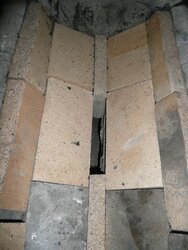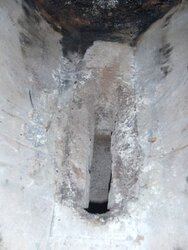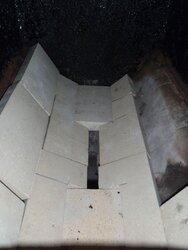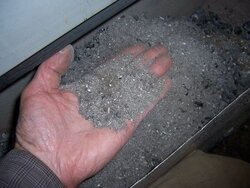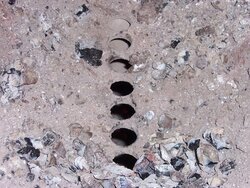Good day.
Just this week (5 Oct 2013), I replaced the nozzle in my Eko Orlan Model 25. I thought I would share some of what I learned and also an experiment I am trying.
To begin, this is the first time I have ever changed a nozzle. The original nozzle lasted three full winters. I have three YouTube videos showing the process and issues I encountered.
...or on YouTube search for: kntryhart
Briefly, I was shocked at the poor manufacturing techniques and total lack of quality control! The secondary air tube on the left side of the boiler was totally misaligned inside the unit; I would say only 10% of the air could be delivered to the nozzle. The new nozzle did not fit and required significant modification. Once fitted, I discovered the holes on the right side of the new nozzle did not align with the holes in the boiler!
One would think the factory would ensure parts were properly aligned since the manual stresses the importance of proper air adjustments! The way the boiler was assembled made any secondary air adjustment a waste of time. For certain, the adjustment values listed in the manual were worthless! Again, see my YouTube videos.
Now, for my experiment. In an attempt to reduce nozzle wear, I took two ceramic floor tiles I had and modified them as shown in the photo. The tiles were sized so they sit nicely over the nozzle. I placed one tile glazed side up and the other glazed side down to see if it affects longevity. I did put refractory cement on both non-glazed backs, dried them and baked before installing.
I have done a couple tests burns and like what I see. The holes reduce the amount of charcoal falling into the lower chamber. There has been some cracking and tile damage at the narrow part between the holes; but I really don't care about that. As long as the area near the nozzle remains intact, I will be happy. Even if I have to replace the tiles several times during a heating season, it will be worth it.
Also, I made a modification to the primary air adjustment gates that I find very useful. It allows me to change the air adjustment without the need to remove the fan and cover assembly. Again, please see my YouTube channel.
Regards,
JT
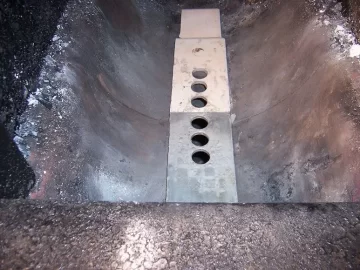
Just this week (5 Oct 2013), I replaced the nozzle in my Eko Orlan Model 25. I thought I would share some of what I learned and also an experiment I am trying.
To begin, this is the first time I have ever changed a nozzle. The original nozzle lasted three full winters. I have three YouTube videos showing the process and issues I encountered.
...or on YouTube search for: kntryhart
Briefly, I was shocked at the poor manufacturing techniques and total lack of quality control! The secondary air tube on the left side of the boiler was totally misaligned inside the unit; I would say only 10% of the air could be delivered to the nozzle. The new nozzle did not fit and required significant modification. Once fitted, I discovered the holes on the right side of the new nozzle did not align with the holes in the boiler!
One would think the factory would ensure parts were properly aligned since the manual stresses the importance of proper air adjustments! The way the boiler was assembled made any secondary air adjustment a waste of time. For certain, the adjustment values listed in the manual were worthless! Again, see my YouTube videos.
Now, for my experiment. In an attempt to reduce nozzle wear, I took two ceramic floor tiles I had and modified them as shown in the photo. The tiles were sized so they sit nicely over the nozzle. I placed one tile glazed side up and the other glazed side down to see if it affects longevity. I did put refractory cement on both non-glazed backs, dried them and baked before installing.
I have done a couple tests burns and like what I see. The holes reduce the amount of charcoal falling into the lower chamber. There has been some cracking and tile damage at the narrow part between the holes; but I really don't care about that. As long as the area near the nozzle remains intact, I will be happy. Even if I have to replace the tiles several times during a heating season, it will be worth it.
Also, I made a modification to the primary air adjustment gates that I find very useful. It allows me to change the air adjustment without the need to remove the fan and cover assembly. Again, please see my YouTube channel.
Regards,
JT



